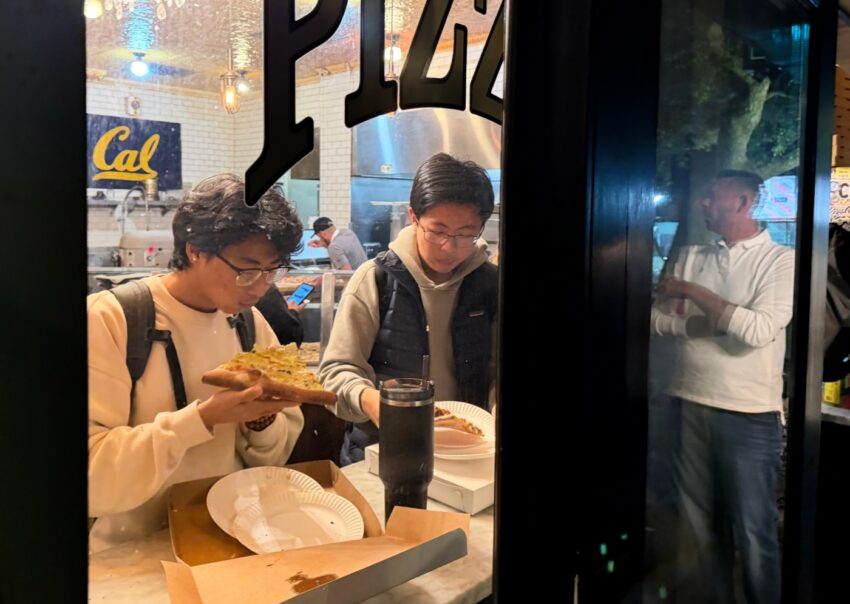**Berkeley Students and Residents Reflect on the End of Daylight Saving Time**
Eugene You had no idea that daylight saving time is ending this Sunday. He’s also never personally adjusted a clock for it or seen one automatically “fall back” at 2 a.m. in a return to “standard” time.
“I’m from Asia, and we don’t do this,” You said, somewhat in awe after learning that most Americans will gain an extra hour of sleep this weekend. The 20-year-old, who’s just a few months into his first semester studying philosophy at UC Berkeley, “had no idea you’d have to actually adjust the clocks.”
Thomas Tang, a 21-year-old economics student in his junior year at Cal, said he isn’t phased by the shift. “It doesn’t matter too much, but I’ll take one more hour of sleep,” Tang said, waiting in line for a slice Thursday night at Artichoke Basille’s Pizza a few blocks from the UC Berkeley campus. “Either way, I’ll be fine.”
### Challenges for Families with Young Children
Not everyone is as flexible in their daily routines as college students. Ushering her sons Elliott and Arthur home less than half an hour before Thursday’s sunset, Berkeley resident Catherine said she was indifferent about seeing the clocks change on Sunday.
However, she noted the transition has always been difficult for her 2- and 4-year-olds. “I know it’s really confusing for the kids when we pick them up from daycare and it’s already dark outside, especially because my eldest’s afraid of the dark,” she said, watching Arthur weave down the sidewalk on his Razor scooter while pushing Elliott in a stroller closely behind. “But it’s just a matter of getting used to it. They’ll adjust — give it a week or two.”
Elliott, Arthur, and more than 300 million others across the U.S. will have to adjust again when clocks “spring forward” one hour and re-enter daylight saving time in March.
### The Ongoing Controversy Over Daylight Saving Time
Daylight saving time continues to be a controversial topic. The latest major research, a Stanford study revisited the perennial debate in September and reported that the biannual shift creates a biological burden on the body’s circadian rhythm that can lead to poorer health.
What’s worse, researchers said, is the current protocol to both “fall back” and “spring forward” is the worst choice for our bodies.
Circadian rhythm is regulated by the hypothalamus deep within the brain, which acts as the body’s innate, roughly 24-hour internal clock. This system is largely responsible for synchronizing personalized, internal schedules with the clocks ticking in the outside world.
That small, almond-shaped internal clock is largely controlled by the timing and intensity of the light that our eyes process, which is sensitive to shifts in the timing and intensity of this “ocular light exposure.”
### Health Impacts of Time Changes
Using county-level data from the Centers for Disease Control and Prevention, the Stanford study analyzed health impacts linked to clocks that permanently stay in either daylight saving time or standard time. It specifically looked at the prevalence of arthritis, cancer, depression, diabetes, obesity, and stroke.
By opting out of this sharp shift in the sunshine’s schedule, researchers said eliminating daylight saving time could help prevent obesity in over 2.6 million people, while decreasing the rate of strokes by mitigating 200,000 to 300,000 cases.
### Daylight Saving Time Around the World and in the U.S.
You, the Cal freshman, isn’t alone in his lack of familiarity with this twice-yearly ritual; daylight saving time isn’t observed in most countries.
Even within the countries that do observe it, clocks change at different times. In the U.S., Arizona and Hawaii run on standard time year-round.
A small majority of Americans are ready to do away with the practice, while 6% remain uncertain, according to a Gallup poll taken shortly after the new year. Notably, only 40% of U.S. adults favored daylight saving time—a significant drop from the roughly 75% who backed it in 1990 and 1999 polls.
### Mixed Results and Differing Preferences
Fortunately, even the Stanford study admits that there are mixed results. “Our data use an idealized light exposure pattern and do not model expected human behavior,” researchers wrote in September, explaining the complex interactions the study found between location within time zone, latitude, and chronotype—the preference for being active at a particular time of day.
“One size most definitely does not fit all.”
### Students Weigh In on the Time Change Debate
If a permanent proposal ever makes it on a future ballot, Onyinye Boardman, a 20-year-old student at UC Berkeley, would probably vote in support of picking just one time for the entire calendar.
Besides the months when campus gets darker earlier than usual—a bother when enrolled in night classes—the media studies major said the issue doesn’t inspire burning advocacy.
“Honestly, I’ve had this same talk with my mom before: why do we even bother?” Boardman said, adding that all of her clocks shift automatically, besides the one in her childhood bedroom in Antioch. “Why don’t we just stick to one? I don’t really see the point.”
https://www.mercurynews.com/2025/11/01/daylight-saving-time-ends-sunday-and-stanford-study-suggests-it-should-go-away-for-good/
